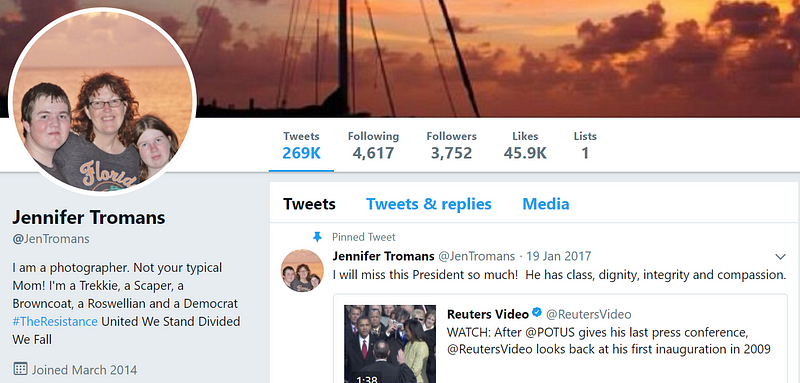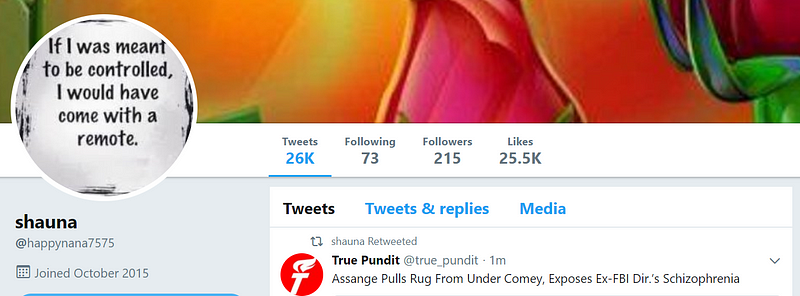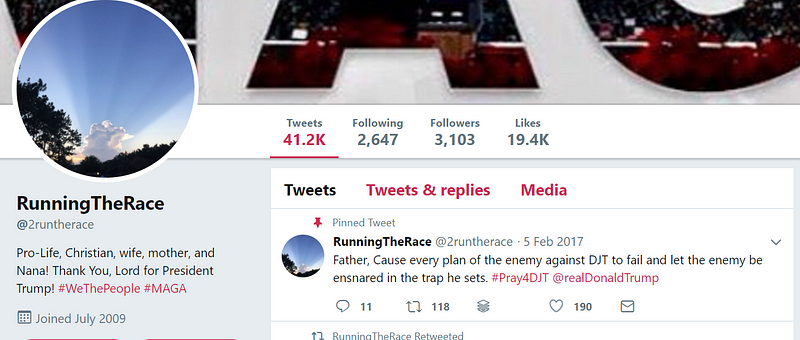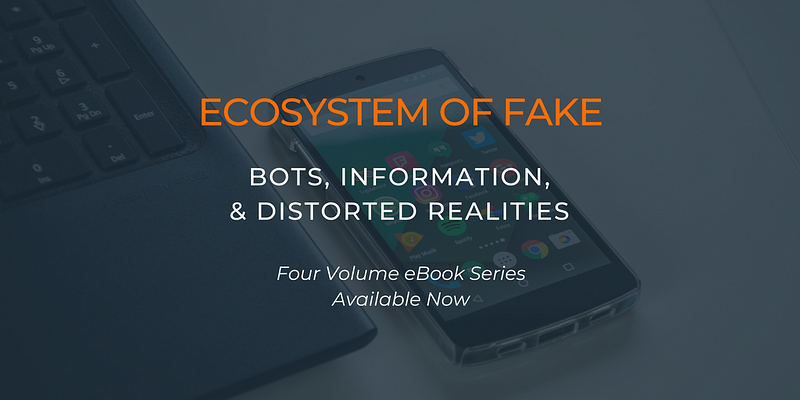
Good luck finding much diversity of commentary, perspective or opinion connected with the hashtag #Olympics2018, because since February 12 (9:16pm) because this tweet has eclipsed all others —
https://twitter.com/oilygemini/status/963280608045817856
As of 8:55 am February 15, it’s holding down the #Olympics2018 top tweet.

The post was closing in on 2000 re-tweets when we spotted it at 4:15 am (PST) February 13. It warranted a closer look. What we’ve noted the past two days raises a lot of questions. As the velocity of re-tweets and likes kept accelerating this Buzzfeed News article “Tweetdecking” Is Taking Over Twitter. Here’s Everything You Need To Know came to mind.
In barely a year the author has built a small audience relative to her high volume of tweets (53 ave tweets per/day in the past seven days) an equal number of likes. As well, she has no recent track record of driving engagement like this tweet has managed-

Compare the Shaun White tweet to these four Olympic themed ones with three likes and zero re-tweets. Things are not adding up. We have to ask, are there other network dynamics in play?




Scrolling through @oilygemini’s feed, there’s nothing suggesting she’s previously produced like this. It’s an impressive example of mining the archive to find this specific clip from a 2006 interview. She can claim to “never forget when shaun white said this”…??? Good memory.
Consider this is a Shaun White shout out for Mountain Dew, which of course is owned by Pepsi. Given Coca Cola is an official 2018 Winter Olympic sponsor, seeing a competitor product placement tweet like this getting this much engagement, lead us back to the idea of “tweetdecking” and the flow of cash into the pockets of some. It’s generating additional impressions reaching beyond what the original authors feed, as this tweet highlights —
https://twitter.com/Pouyalilpou/status/963952633374535680
We also noted a pattern of profiles with similar “personalities” as @oilygemini in terms of the follower & following metrics who are connected with tweet. From a sample of 601 unique profiles we noted the following distribution:
56 profiles have more than 1000 followers
128 profiles have between 500–999 followers
333 profiles have between 101–499 followers (the same range as @oilygemini)
84 profiles have fewer than 100 followers
This sample of profiles we’ve reviewed highlights a number of similarities, but what’s noticeable is a lack of other Olympic related tweets. The following five profiles are sorted in order by the number of their followers (at the time we extracted the data) they had 491,487,482, 480, 479. We’re asking what is their connection or motivation to share this tweet?
We’re not suggesting this is an elaborate bot network at work, but 40,000 plus re-tweets and 110,000 plus likes are metrics that many brands can only dream of. We’d characterize this as being more of a human network displaying distinct bot-like behaviors. This tweet has all the hallmarks of a being a well orchestrated and automated campaign, that has successfully driven major consumer brand into the forefront of the Olympic conversation.
Regardless of only being able to speculate what strings have been pulled to make the tweet take-off, there’s no denying it’s proving to a social media gold medal moment. Of course, if there was a social media doping test we’re not too sure if it would pass.
Find Out Why Social Bots Are So Dangerous. The Complete 4-Volume eBook Is Available Now on Patreon Only.

While 2017 is behind us, many of the past years troubling themes are not. We’ve seen investigations into Russia’s interference in the US Presidential Election unfold, CEOs of digital platforms being questioned about how their contributing to the information crisis, along media outlets and information itself being deemed untrustworthy. With few solutions in sight, 2018 is likely to see more of the same.
To help you see through the complexities of this rapidly evolving landscape, we’ve written the four-volume eBook series, Ecosystem of Fake: Bots, Information & Distorted Realities. We invite you to learn more about today’s information battlefield, proposed solutions, and a further reading resource today. Let’s work towards making cyberspace of more human place.
Sincerely
John (CEO & Co-founder)
Mentionmapp Investigates: See if your social reputation is at risk or explore collaborative research opportunities with us. Contact: john [at] mentionmapp [dot] com

















